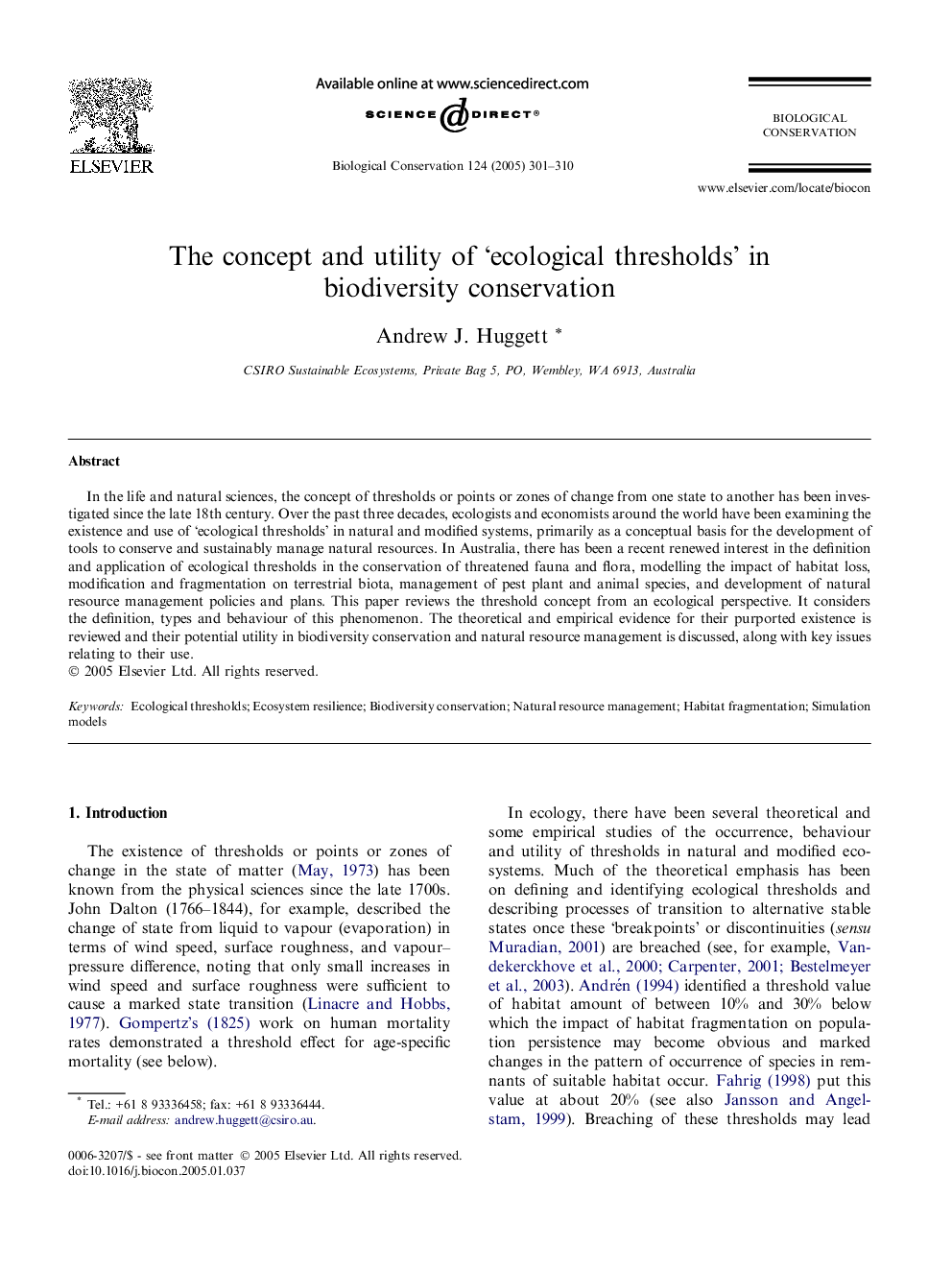| Article ID | Journal | Published Year | Pages | File Type |
|---|---|---|---|---|
| 9445920 | Biological Conservation | 2005 | 10 Pages |
Abstract
In the life and natural sciences, the concept of thresholds or points or zones of change from one state to another has been investigated since the late 18th century. Over the past three decades, ecologists and economists around the world have been examining the existence and use of 'ecological thresholds' in natural and modified systems, primarily as a conceptual basis for the development of tools to conserve and sustainably manage natural resources. In Australia, there has been a recent renewed interest in the definition and application of ecological thresholds in the conservation of threatened fauna and flora, modelling the impact of habitat loss, modification and fragmentation on terrestrial biota, management of pest plant and animal species, and development of natural resource management policies and plans. This paper reviews the threshold concept from an ecological perspective. It considers the definition, types and behaviour of this phenomenon. The theoretical and empirical evidence for their purported existence is reviewed and their potential utility in biodiversity conservation and natural resource management is discussed, along with key issues relating to their use.
Keywords
Related Topics
Life Sciences
Agricultural and Biological Sciences
Ecology, Evolution, Behavior and Systematics
Authors
Andrew J. Huggett,
